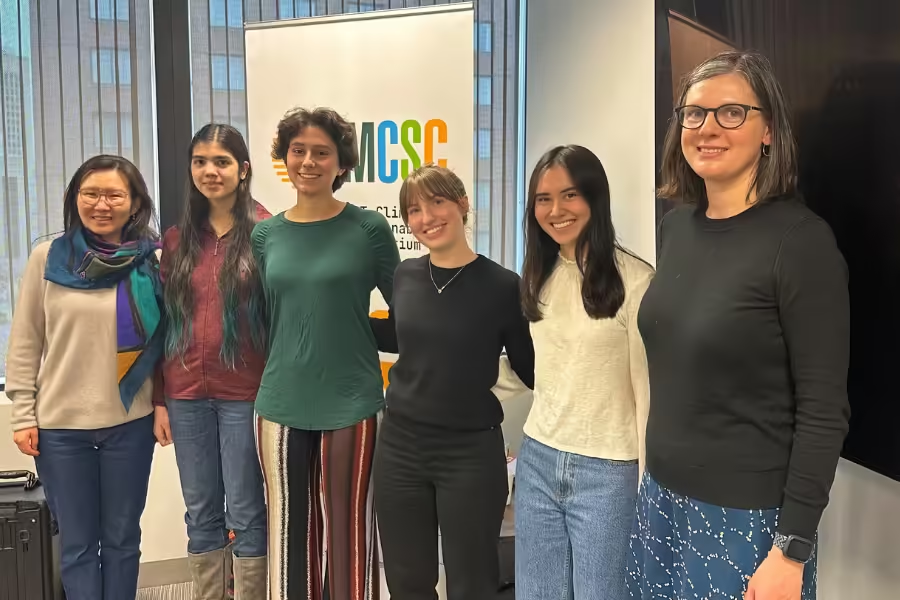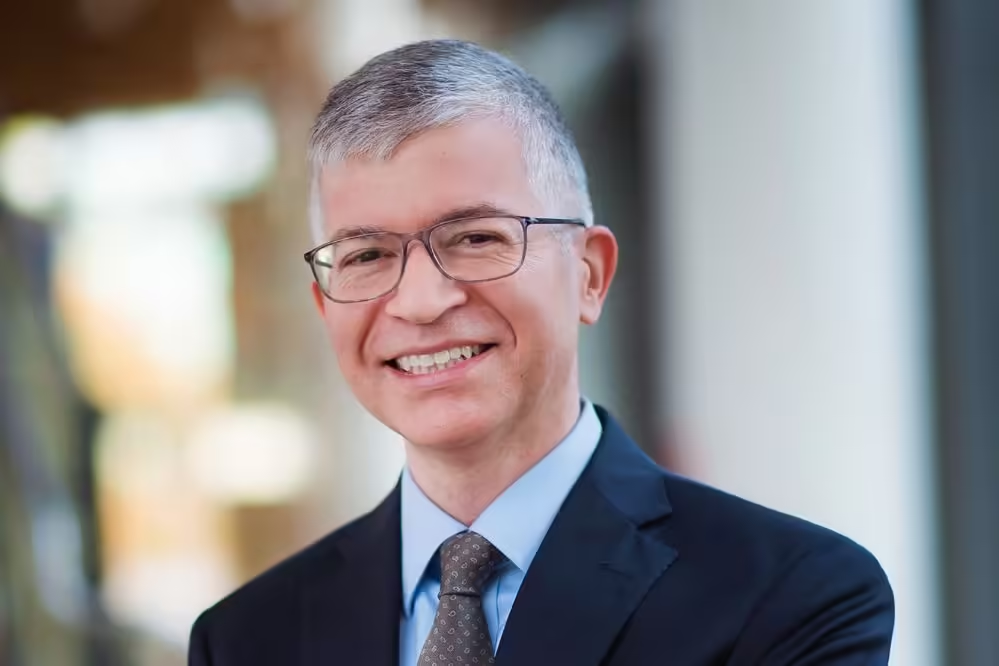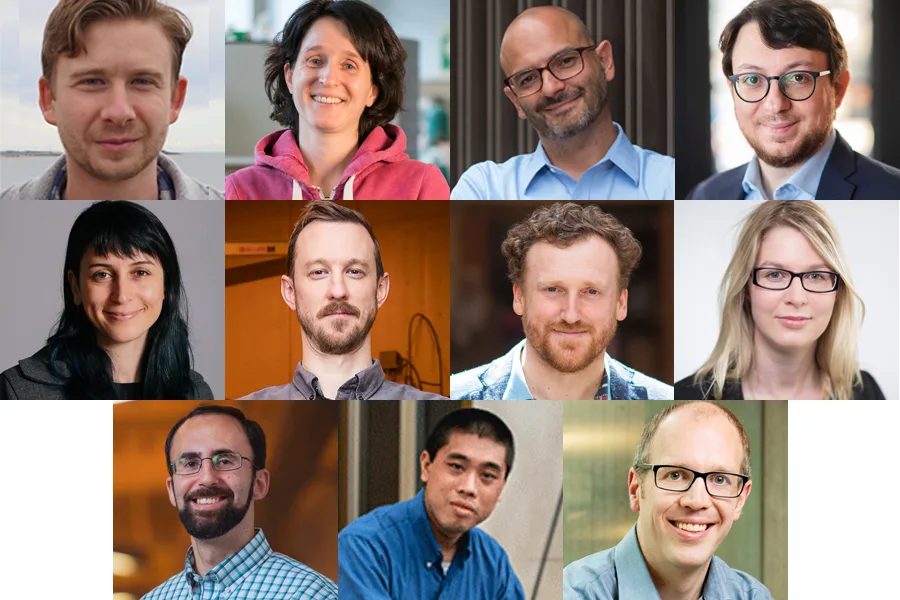In 2021, Associate Professor of Nuclear Science and Engineering Michael Short approached Anthropology Professor Manduhai Buyandelger with an unusual proposal: to collaborate on a prototype project for a molten salt heat bank in Mongolia, Buyandelger’s home country and the focus of her scholarship. This was an invitation to forge a unique partnership between two disciplines that rarely intersect. Developed in collaboration with the National University of Mongolia (NUM), the device was designed to provide heat to people living in colder climates and in areas where clean energy is a challenge.
Buyandelger and Short teamed up to launch Anthro-Engineering Decarbonization at the Million-Person Scale, an initiative aimed at advancing the concept of heat banks in Mongolia and ultimately demonstrating its potential as a scalable clean heat source in similarly challenging locations worldwide. The project received funding from the inaugural MIT Climate and Sustainability Consortium Seed Awards. To support various components of the project, including student and additional staff involvement, it also received backing from the MIT Global Seed Funds, New Engineering Education Transformation (NEET), the Office of Experiential Learning, the Vice Chancellor for International Activities, and the d’Arbeloff Fund for Excellence in Education.
As part of this initiative, the partners developed a special anthropology-themed course to teach MIT undergraduates about Mongolia’s unique energy and climate challenges, as well as the historical, social, and economic context in which the heat bank would ideally be situated. The course, 21A.S01 (Anthro-Engineering: Decarbonization at the Million-Person Scale), prepares MIT students for a January trip during the Independent Activities Period (IAP) to Mongolia’s capital, Ulaanbaatar, where they integrate into Mongolian families, conduct research, and collaborate with peers. Mongolian students have also engaged in the project. Lauren Bonilla, an anthropologist and lecturer who has spent the past two decades working in Mongolia, joined to co-teach the class and lead the IAP trips to Mongolia.
As the project enters its third year and yields promising solutions on the ground, Buyandelger and Bonilla reflect on the challenges anthropologists face in advancing clean energy technology in a developing country with a unique history, politics, and culture.
Question: Your roles in the molten salt heat bank project mark a departure from your typical academic routine. How did you initially approach this venture?
Buyandelger: As an anthropologist of contemporary religion, politics, and gender in Mongolia, I had little contact with hard sciences or building and prototyping technology. What I excel at is listening to people and working with narratives. When I first heard about this standalone heating device, many issues related to the socioeconomic and cultural context of the place immediately came to mind. The salt brick, encased in steel, needs to be heated to 400 degrees Celsius at a central facility and then transported to people’s homes. Transport is challenging in Ulaanbaatar, and I worry about road safety when driving the salt brick to the Gers [traditional Mongolian homes] where many residents live. The device seemed somewhat utopian to me, but I realized it was a fantastic educational opportunity: we could use the heat bank as part of an ethnographic project, allowing students to learn about people’s daily lives—especially in the dead of winter—and how they might react to this new energy technology in Ulaanbaatar’s neighborhoods.
Bonilla: When I first went to Mongolia in the early 2000s as an undergraduate student, the impacts of climate change were already being felt. There was a massive migration to the capital after a series of severe weather events devastated the rural economy. Coal mining had become a vital part of the economy, and I was interested in how people viewed this industry that both created jobs and damaged the air they breathed. I have a background in human geography, which involves seeing how local events connect to global happenings. Thinking about climate or sustainability from this perspective means linking social life with environmental life. In Mongolia, people associated coal with national progress. Based on their historical experience, they had low expectations for foreign interventions to improve their lives. So, my initial interpretation of the molten salt project was that it was not a silver bullet. At the same time, I wanted to see how we could make it a great project-based learning experience for students, prompting them to think about the kind of research needed to see if a version of molten salt would work.
Question: After two years, what lessons have you and the students learned from the class and field trips to Ulaanbaatar?
Buyandelger: We wanted to ensure that MIT students wouldn’t go to Mongolia and act like consultants. We taught them anthropological methods so they could understand real people’s experiences and think about how to bridge people and new technologies. The students, from engineering and anthropology and social sciences backgrounds, became critical thinkers capable of analyzing how people live in the ger districts. When they stay with families in Ulaanbaatar in January, they not only endure the cold and pollution but also observe what people do for work, how parents care for their children, how they cook, sleep, and move from one place to another. This allows them to better imagine and test how these people might use the molten salt heat bank in their homes.
Bonilla: In class, students learn that such interventions often fail because the implementation process doesn’t work or the technology doesn’t meet people’s real needs. This is where anthropology is so important, as it opens up the broader landscape in which you intervene. We’ve had very challenging conversations about the professional socialization of engineers and social scientists. Engineers love working in boxes but don’t necessarily appreciate the context in which their invention will serve.
As a group, we discussed the provocative notion that engineers build and anthropologists deconstruct. This makes it seem like engineers are creators and anthropologists are brought in to consult and critique engineers’ creations. Our group conversation concluded that a project like ours benefits from an iterative back-and-forth between techno-scientific and humanistic disciplines.
Question: So, where is the molten salt brick project now?
Bonilla: Our research in Mongolia has allowed us to produce a prototype that can work: our partners at NUM are developing a hybrid stove incorporating the molten salt brick. Supervised by instructor Nathan Melenbrink from MIT’s NEET program, our engineering students have also been involved in this prototyping.
The concept is that a family heats it with a coal fire once a day, and their home stays warm overnight. Based on our anthropological research, we believe this stove would work better than the device as it was initially designed. It won’t eliminate coal use in residences, but it will reduce emissions enough to have a significant impact on the ger districts in Ulaanbaatar. The challenge now is to secure funding for NUM to test different salt combinations and stove models and employ local blacksmiths to work on the design.
This integrated stove/heat bank won’t be the ultimate solution to Mongolia’s heating and pollution crisis. But it will be something that can inspire even more ideas. We feel that with this project, we’re planting all kinds of seeds that will sprout in ways we can’t predict. It has sparked new relationships between MIT and Mongolian students and prompted engineers to incorporate a more humanistic anthropological perspective into their work.
Buyandelger: Our work illustrates the importance of anthropology in responding to the unpredictable and diverse impacts of climate change. Without our ethnographic research—based on participant observation and interviews, led by Dr. Bonilla—it would have been impossible to see how prototyping and modifications could be made, where the molten salt brick could work, and what form it should take. This project demonstrates how indispensable anthropology is for bringing engineering out of labs and companies and directly into communities.
Bonilla: This is where real solutions to climate change will come from. Even though we need quick solutions, it will also take time for new technologies like molten salt bricks to take root and grow. We don’t know where the results of these experiments will lead us. But there’s so much emerging from this project that gives me a lot of hope.



